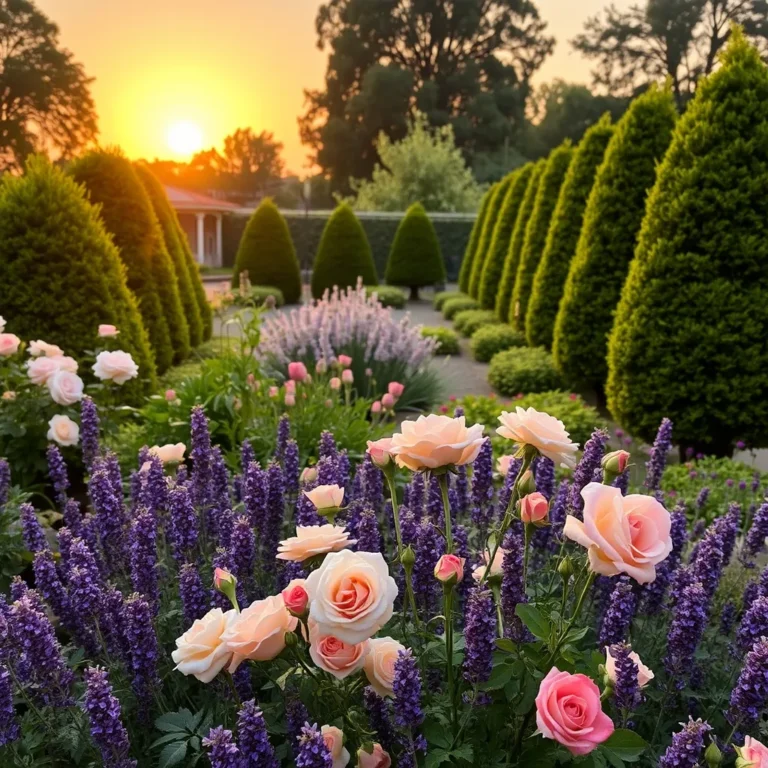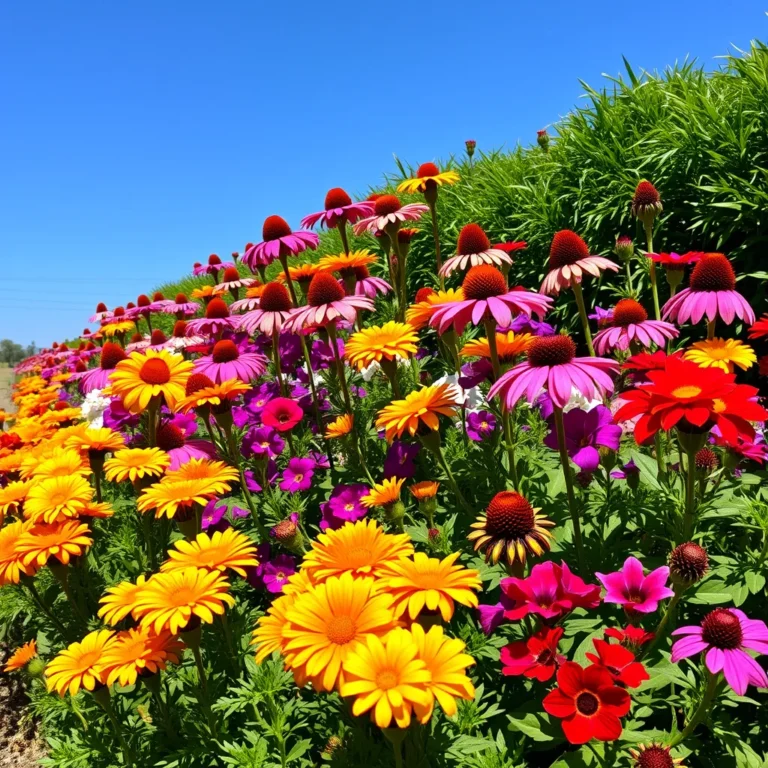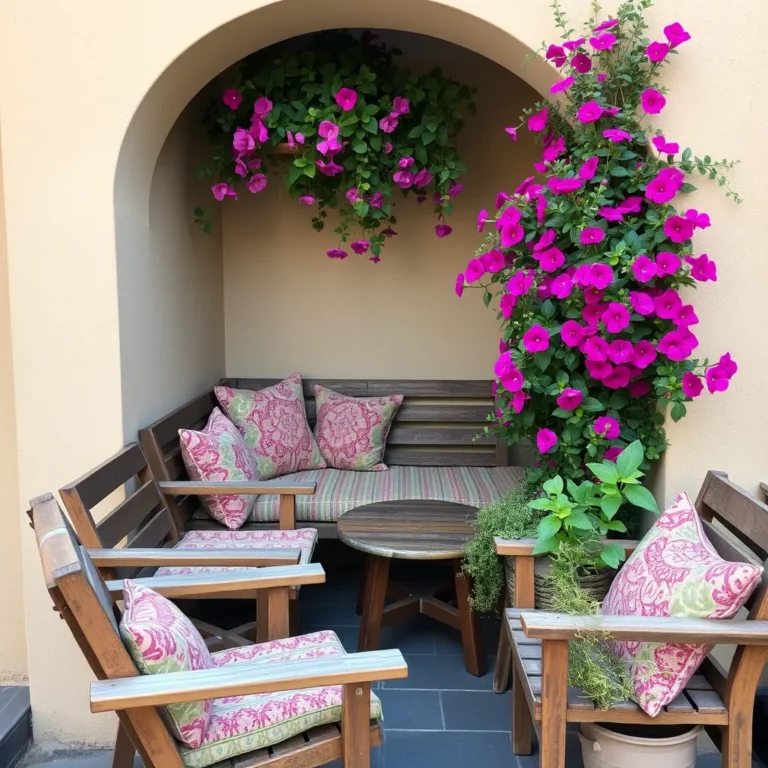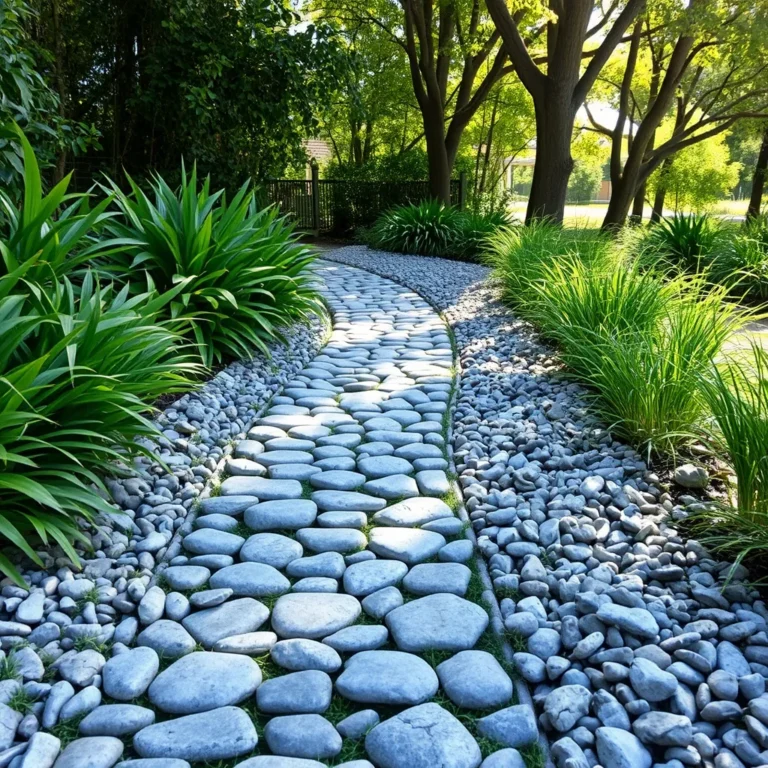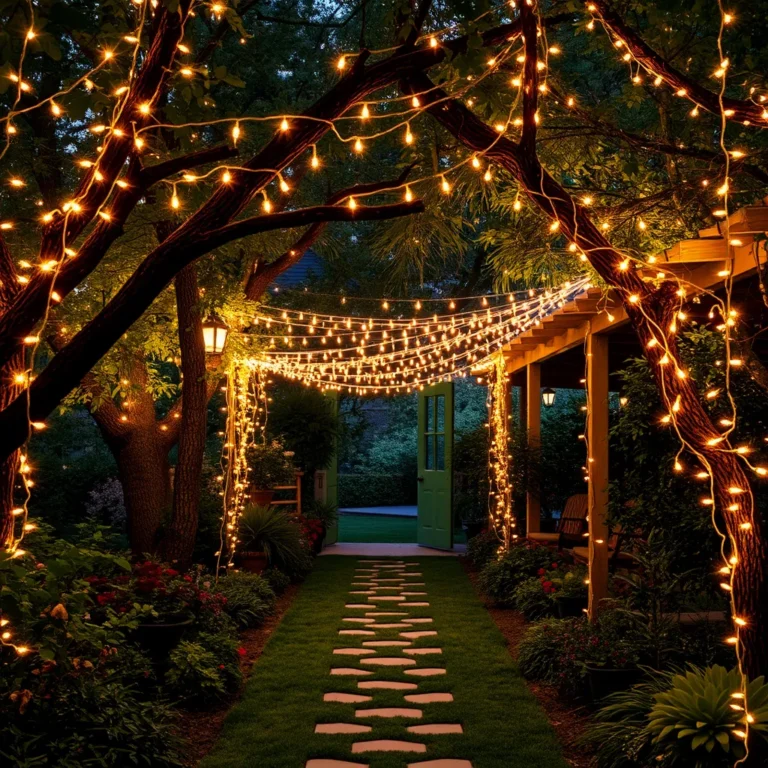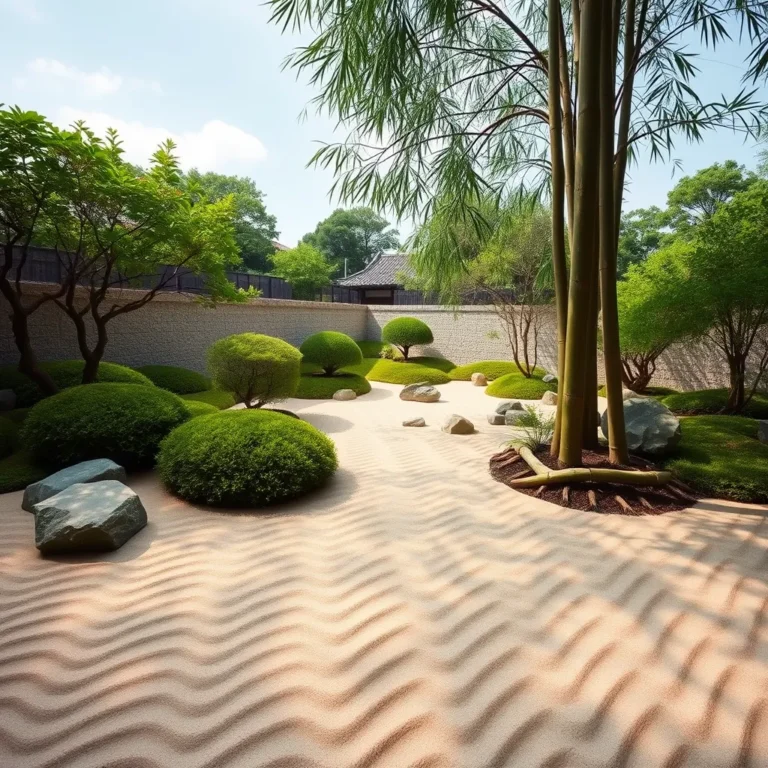7 Inspiring Cottage Garden Ideas for Outdoor Beauty
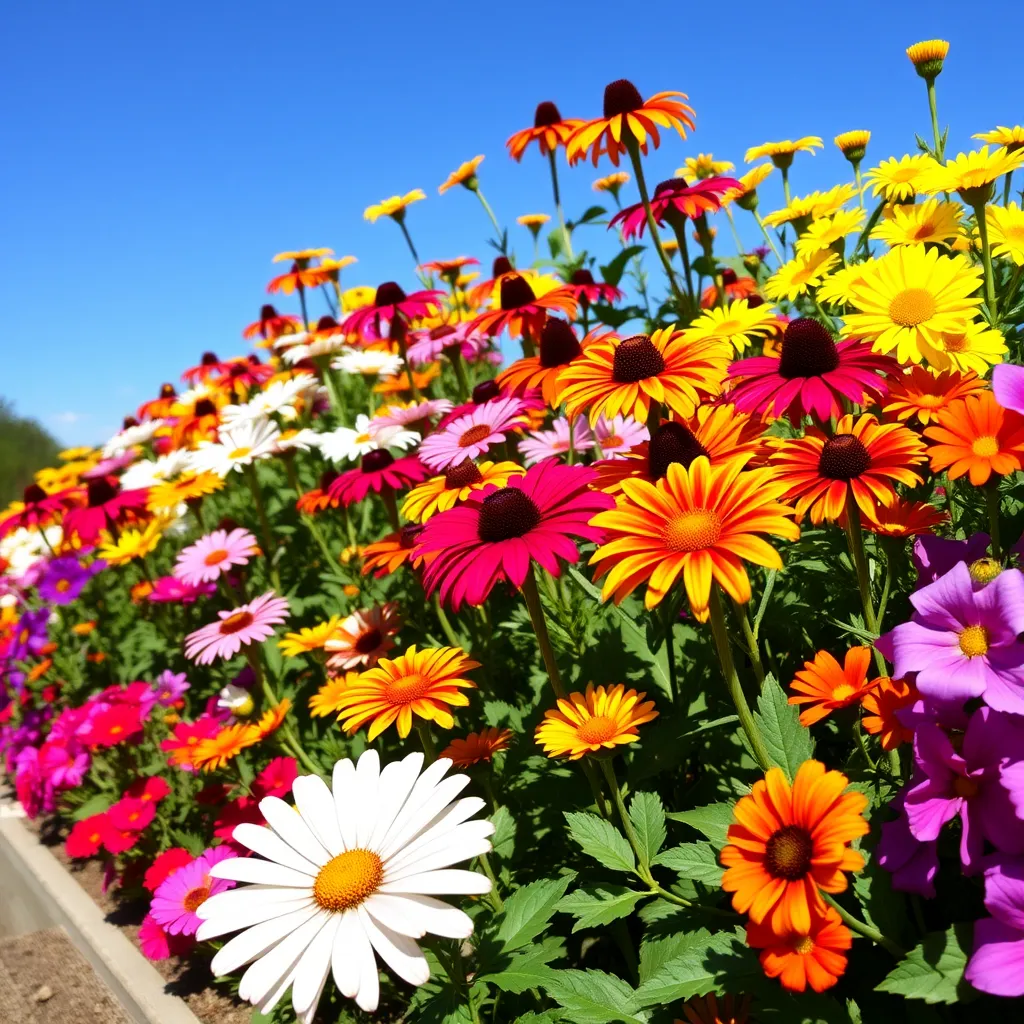
Are you dreaming of a charming cottage garden that bursts with beauty? In this post, I’ll share seven inspiring ideas that can transform your outdoor space. From vibrant flower borders to cozy nooks and rustic pathways, you’ll find everything you need to create your perfect garden retreat. Let’s dive in and explore how to make your garden a magical place full of color and life!
Vibrant Flower Borders: Incorporating Colorful Perennials and Annuals

To start your cottage garden, add vibrant flower borders. Choose colorful perennials like daisies and coneflowers. These flowers come back year after year. They create a lively look in your garden. Mix in annuals like marigolds and petunias for bright pops of color. Annuals bloom all season long. You can change them out each year for new looks.
Plan your borders to have different heights. Place tall flowers at the back and shorter ones in front. This adds depth and interest. Use a mix of colors that complement each other. Think about the seasons too. Some flowers bloom in spring, while others bloom in summer or fall. This keeps your garden looking fresh all year.
Rustic Pathways: Using Natural Stone and Gravel for a Charming Walkway

A rustic pathway can enhance your cottage garden. Use natural stone or gravel for a warm look. These materials blend well with nature. Lay the stones in a casual pattern for a relaxed feel. You can also use bricks or wood for variety.
Make your pathway wide enough for easy walking. This invites guests to stroll through your garden. Surround the path with flowers and plants. This creates a cozy atmosphere. Add small lights along the path for a magical touch at night.
Cozy Seating Areas: Designing Nook Spaces with Vintage Furniture

Cozy seating areas make your garden inviting. Look for vintage furniture like a wrought iron bench or a wooden swing. These pieces add charm and comfort. Place them in quiet spots, surrounded by flowers. This gives you a perfect place to relax and enjoy nature.
Add cushions for comfort and color. Choose fabrics that resist weather. You can also add small tables for drinks or books. Use these areas to host friends or enjoy a quiet moment alone. A cozy nook can be your favorite spot in the garden.
Herb Spiral Gardens: Creating a Functional and Aesthetic Feature

Herb spiral gardens are a fun way to grow herbs in a small space. You can create a spiral shape using stones or bricks. This design allows for good drainage and airflow. It is easy to care for and looks great.
In a herb spiral, you can plant many herbs. Place taller herbs at the top. This way, they get the most sun. Then, plant shorter herbs as you go down. Herbs like basil, thyme, and parsley thrive in this setup.
This garden style is also good for the soil. The spiral shape helps keep the soil moist. It can save water and help your herbs grow strong. Plus, you can pick fresh herbs right from your garden!
Vertical Gardening: Maximizing Space with Wall Planters and Hanging Baskets

Vertical gardening lets you grow plants up instead of out. This saves space and adds beauty to your garden. Use wall planters or hanging baskets to get started.
You can use old pallets, wooden crates, or even old shoe organizers. Fill them with soil and your favorite plants. Flowers, strawberries, or herbs work well. They will grow up the wall, creating a lovely view.
Vertical gardens also make it easy to care for plants. You can reach them without bending over. This makes gardening fun and less tiring!
Natural Fencing: Using Wood and Trellises for a Cottage Feel

Natural fencing gives your garden a cozy look. Use wood or trellises to create borders. This type of fence feels warm and inviting.
You can build a simple wooden fence or use bamboo poles. They can mark where your garden starts and ends. A trellis can support climbing plants like vines or roses. These plants add beauty and privacy.
Natural fencing blends well with flowers and plants. It creates a soft, cottage-like atmosphere. Plus, it can help keep pets or kids safe while they play.
Garden Arbors and Arches: Adding Height and Vertical Interest

Garden arbors and arches give your space height and charm. They create a focal point that draws the eye. You can cover them with climbing plants. Roses and clematis work well. The flowers will bloom and add color.
These structures invite you to walk through. They can lead to cozy spots or hidden areas. Think of them as gateways to wonder. You can also hang lights or lanterns for a warm glow.
To build one, use wood or metal. Make sure it fits your garden style. You can paint it in bright colors or leave it natural. This choice adds to your garden’s feel.
Wildlife-Friendly Features: Attracting Birds and Bees with Native Plants

Wildlife-friendly features help nature thrive in your garden. You can plant native flowers. These plants attract birds and bees. They provide food and homes for many creatures.
Choose plants like coneflowers and black-eyed Susans. These flowers are pretty and useful. They bloom at different times, so your garden stays lively.
Adding birdhouses and bee hotels invites more wildlife. Place them in sunny spots. Keep water sources nearby, like a small birdbath. This helps attract even more visitors.
Decorative Garden Accents: Incorporating Whimsical Statues and Planters

Decorative garden accents add fun and personality. You might choose whimsical statues. Animals, fairies, or gnomes can bring joy. These pieces spark conversation and delight.
Planters also play a key role. You can use unique containers like old boots or teacups. This adds a playful touch to your garden. Fill them with bright flowers or herbs.
Mix and match textures and colors. This creates a lively atmosphere. Your garden will feel inviting and full of life.
Seasonal Planting Tips: Choosing Flowers and Plants for Year-Round Appeal

To have a beautiful garden all year, choose flowers that bloom in different seasons. Start with spring bulbs like tulips and daffodils. They bring bright colors after winter. In summer, plant sunflowers and daisies. They love the sun and add cheer.
For fall, consider asters and chrysanthemums. They keep your garden lively as summer fades. In winter, evergreens, like holly and pine, provide color and structure. Mixing these plants creates layers and textures.
Use a planting calendar to know when to plant. This helps you enjoy blooms every season. Also, choose native plants. They grow well in your area and attract local wildlife.
Sustainable Practices: Implementing Eco-Friendly Gardening Techniques

Sustainable practices help your garden and the planet. Start by using compost. It enriches the soil and reduces waste. You can compost kitchen scraps and garden waste.
Next, collect rainwater. Set up barrels to catch rain. This water is great for your plants. It saves money and helps the environment.
Choose organic seeds and plants. They are better for the soil and your health. Avoid harsh chemicals. Instead, use natural pest control methods, like ladybugs. They eat harmful bugs without harming your plants.
Lastly, practice crop rotation. This means changing where you plant each year. It keeps the soil healthy and prevents disease.
Maintenance Tips: Keeping Your Cottage Garden Thriving and Lush

Regular maintenance keeps your garden beautiful. Start with watering. Early morning is the best time. This helps plants absorb water before the sun gets hot.
Next, weed your garden often. Weeds compete for nutrients. Pull them out by hand or use a hoe. Keep an eye on pests. Catch them early to prevent damage.
Prune plants as needed. This promotes growth and keeps them tidy. Mulching helps, too. It keeps moisture in and reduces weeds.
Finally, add organic fertilizers. They provide nutrients for healthy plants. A little effort goes a long way in keeping your garden lush.
Conclusion
In this article, we explored ways to create a stunning cottage garden. We covered colorful flowers, charming pathways, and cozy seating. We also talked about herb spirals, vertical gardens, and natural fencing. Adding arbors and attracting wildlife brings life to your space. Decorative accents and seasonal tips keep your garden vibrant year-round. Finally, using sustainable practices ensures a healthy garden. With these ideas, you can make your outdoor space a joyful retreat. Enjoy the beauty and life your cottage garden brings.

